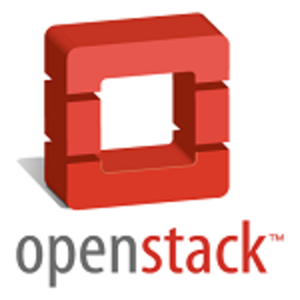Philosophically, the open source concept borrows some selected elements from socialism. It upholds a notion of the “common good,” it eschews the appearance of authority or hierarchy, and it often frowns upon capitalizing on one’s own work, insofar as being exclusive. In practice, however, open source projects may look less like Big Brother from 1984 and more like Big Brother from reality TV.

Joshua McKenty’s still-young career is, compared to those of other capitalist executives, surprisingly replete. He’s led development teams for the Netscape browser, and is intimately familiar with Netscape’s successors at Mozilla. His next stroke of luck was with the space program, helping to create and then lead one of the world’s most successful cloud computing projects, NASA Nebula. His work with NASA spawned the open source community’s most successful – and perhaps most important – project in the last few years, the OpenStack cloud operating system – and he sits on that project’s governing body. In-between jobs, he just happened to pioneer an earthquake modeling system for the World Bank.
What McKenty’s learned from a life that may not be one-third of the way over yet, are the lessons you’d expect to tell your grandkids. Now he’s the CEO of Piston Cloud, the first commercial vendor dedicated to OpenStack. Already, he has a boatload of life lessons for the open source development community at large, and he’s not about to wait for grandkids to come along to start sharing them. With a notable degree of eagerness and enthusiasm, Josh McKenty shared his insights with RWW.
Open source vs. customer focus
McKenty’s story begins with Netscape. His time there began with the somewhat confused period late in the company’s existence as a division of AOL. Immediately he learned that “open” comes in many shades and colors.
He calls the late period of Netscape 8 and 9 “probably the most complicated and nuanced open source environment you can imagine. Netscape was released as the Mozilla code base, and so everyone thinks of Firefox being to the benefit of Netscape. But the code is a tri-license that allows Netscape to close it and develop it for proprietary [purposes] afterwards. Then you have the fact that Firefox, which everybody thinks of as being a Mozilla project, was actually a fork of Mozilla by a sole individual that Mozilla then reverse-forked back into their organization and turned into a $300 million-per-year business, which they did not share.”
It’s ownership and licensing schemes such as this, McKenty says, that make personal politics more prominent in open source projects than philosophies and governance models. He believes one of the Google Chrome project’s greatest strengths comes from the insistence by the Chromium development team – to which Google appears to be adhering – that the code base remain “fully open-sourced, in the open.”
It was at about this time when Mozilla began mitigating what the community described as “the tooltip bug” (typically with an amalgam of punctuation attached), and what the organization officially recorded as dozens of related bugs (just one culmination was recorded here).
“It was a bug that was recorded and watched and re-reported and duplicated 460 times over 7 years,” McKenty relates. “And the response from the Mozilla developer community was always the same: ‘If you really cared, you would learn how to code and fix it yourself.’
“We are an open source company, and every open source company lives or dies by their ability to balance their interaction with the community with their interaction with their customers.”
Joshua McKenty
CEO, Piston Cloud
“It has always been the worst part of many open source projects, but I think Mozilla’s more guilty of it than anyone else: the attitude that the developers tend to develop over time that they are the important users of the product,” the Piston Cloud CEO continues. “And this has never really been true. That’s what’s interesting about most open source software: The developers who are really deeply engaged in building it may have started out solving their own pain. But if they’re really successful, there are usually two or three orders of magnitude more people using it than actually building it. So the disconnect between what it is and what it needs to become, gets larger and larger. This is why the open source projects that really survive in the long term figure out how to build that bridge back to the end user’s requirements. And those are often commercial entities.”
Stage fright
After Netscape, McKenty went on to be a software architect and business developer for Flock, Inc., whose product was a socially-oriented Web browser built on the Mozilla code base. While there, he tells us, “we would hire new developers turn them loose, and say, ‘Every commit that you make is going to be looked at by other people in the world.’ That’s a terrifying experience, especially if you’re a young coder or you’re new to the code base… It has nothing to do with the philosophy of open source. It has to do with a sense of embarrassment or nervousness to have your daily commits be scrutinized by folks that maybe you think of as being more experienced than you.”
McKenty points to the very project he oversees now – OpenStack – as one example where important components are not produced in the open: for example, support for IPv6 contributed by NTT Data of Japan. “[Of] the 260-odd folks who are actively contributing code, as opposed to design features or documentation or localization or whatever else… about a third of them are not building in the open. They all design in the open; that’s the community requirement. But then they go home and they code for a couple of months until they have something that they can show, and then they make a big code drop, and then we attack it.”
To space and beyond
Some of the earliest Mercury astronauts credit their good fortune with having been at the right place at the right time. By virtue of being teamed with just the right group of consultants in 2009, Joshua McKenty found himself as a lead architect on a project launched at NASA. Called Nebula, it was America’s most significant government-funded computer research facility since the heyday of the supercomputer.
On paper, McKenty worked with a firm called Anso Labs. He soon learned that doing any kind of government project involved a separation of what you see in reality from what’s on paper.
“Despite whatever retrospective history has been applied to it, [Anso] was simply, at the time, a maneuver to deal with NASA internal politics around contracting,” McKenty tells RWW. “The Nebula Project itself was built inside a larger IT contract that employs a couple of hundred people, and we were two or three subcontractors down from NASA proper at the time. So we were just trying to guarantee that we could keep our developer team together working on Nebula, while NASA went through a re-compete on the contract.”

Anso made it possible for Nebula to continue for as long as it did, keeping the project open and sharing its benefits with other developers through OpenStack. But that was only for so long. Eventually Nebula was de-funded, and the operation was folded back into NASA’s existing supercomputing projects. There, McKenty says, outright opponents to cloud computing have taken full advantage of the opportunity to do next to nothing with Nebula.
“ It has always been the worst part of many open source projects, but I think Mozilla’s more guilty of it than anyone else: the attitude that the developers tend to develop over time that they are the important users of the product. And this has never really been true.”
Joshua McKenty
CEO, Piston Cloud
Meanwhile, Anso Labs was acquired by cloud service provider RackSpace. While some sources played the acquisition as though it were a conspiracy, McKenty tells us that RackSpace’s motives are purely genuine: to see OpenStack succeed, and to continue what their own people, essentially, started.
“I think what Rackspace has done with the contribution of Swift to OpenStack is really unprecedented in their market segment,” says Piston Cloud CEO Joshua McKenty. “But RackSpace does not want to be a software company, and they don’t really even want to be an open source software company. They want to be a fanatical support company; that’s who they are, that’s their DNA. Now they have this core open source project… around which they can provide their service.
“But to my mind, OpenStack isn’t finished,” he continues. “We haven’t finished changing the world yet, and I wanted to stay focused on building out OpenStack to what it really needs to be.”
Spinout from the Nebula
While many of McKenty’s personal best friends went with Anso to RackSpace, he stayed out to pursue his own dream. Exactly what that was hadn’t quite formed yet, even as late as the fall of 2010. He took a six-month sabbatical, during which he found time for that little earthquake modeling project for the World Bank. He joined a working group on the role of governments and organizations in building technology infrastructure, along with a handful of friends and associates – Vint Cerf, Sergey Brin, and Vivek Kundra.
“None of those environments actually gave me the same opportunity to understand the requirements that I’ve gotten out of being the CEO of a startup,” McKenty tells us. “The reason to be Piston Cloud right now – aside from the fact that it’s going to be the best business ever – [is] to be in the room with the people who are going to use the product, and actually talk to them about what they need. It’s very hard to get in the room with the folks who will be most impacted by the technology without being a vendor.”
Despite the most honest and thoughtful community outreach, says McKenty, a non-commercial or semi-commercial open source project simply does not garner the level of confidence from its customers that a commercial project does. Almost immediately upon building Piston Cloud, McKenty found himself in direct communication with existing OpenStack users who had never been in contact with anyone representing OpenStack in the past. Being a CEO makes one more accessible than being a committee.

One example: A disaster risk reduction facility is headquartered in Indonesia, but has OpenStack-based cloud services in Australia and customers in Australia. It wanted to expand its cloud to Jakarta, and needed Piston Cloud’s help. It’s the type of customer contact Anso Labs would have only dreamed about, and now it’s coming directly to the source.
“Nobody in the OpenStack community even knew that the Australian government was evaluating it, let alone had pushed it into production,” remarks McKenty. “In one phone call from an inbound request, I ended up on the phone with the folks in Australia who had been operating OpenStack at scale, and was able to talk to them about exactly what their needs were, and what they wanted to see in the next release. And there was no way they were going to make it to Boston in person to talk about this.
“The property of being a vendor, and the property of being in the press, as odd as that sounds, gives us this amazing opportunity to really understand what people need,” he continues. “The commercial side of this has an amazingly crystalizing effect on people’s priorities of what they want built. We are an open source company, and every open source company lives or dies by their ability to balance their interaction with the community with their interaction with their customers… Can we present ourselves in ways that are understandable to those two different communities without ever becoming two-faced, or engaging in a dichotomy? It has to be, honestly, this is who we are, in all cases.”










